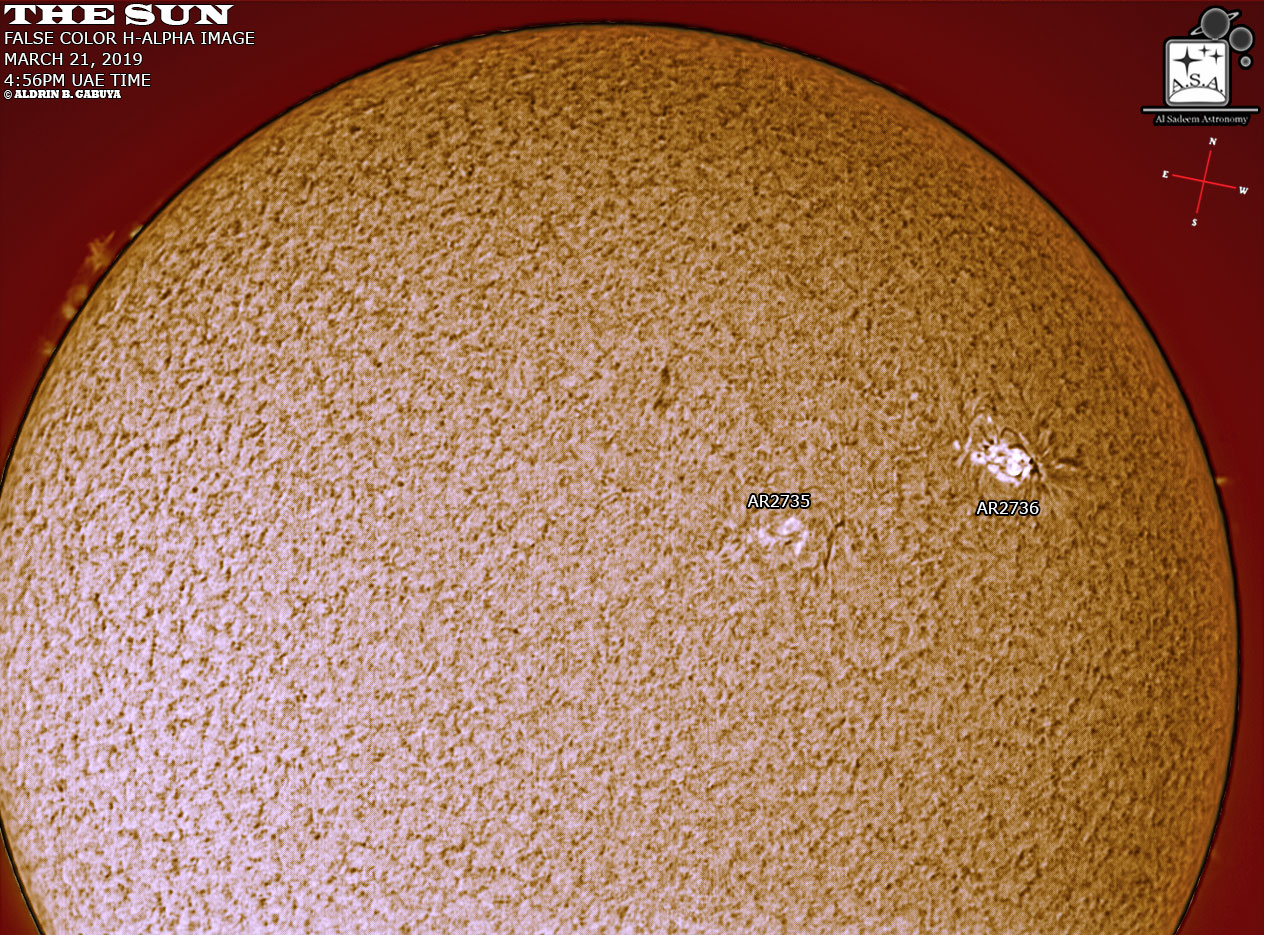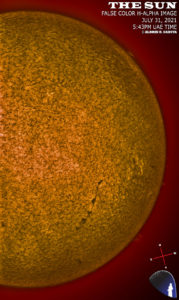Here are today’s solar images taken from Al Sadeem Observatory, March 21, 2019.
The sky was partly cloudy with intermittent light to moderate winds which provided average seeing and transparency at the time these images were taken.
AR2736 (Modified Zurich/Mcintosh sunspot configuration: Dai/beta) has been growing rapidly in structure and produced multiple minor B-class and C-class solar flares over the past 24 hours. It was reported that it was the source of an associated CME recorded yesterday afternoon, which was slightly off Earth-directed and is expected to cause a minor geomagnetic storm to Earth (disturbance in the Earth’s magnetic field caused by the immense flow of solar wind) on March 23, 2019, based on recent space weather agency records and analyses. Meanwhile, the other sunspot group AR2735 (Axx/alpha) continues to decay gradually in structure and has been inactive. The latest sunspot number (based on visual count and Wolf number calculation) is 32. The Sun is picking up further activity through the presence of eruptive prominences mostly at the eastern section of the Sun’s disk, with evident flaring activity from AR2736, scattered plages from both visible sunspot regions and some tiny stable filaments across the solar surface as distinctively captured in H-alpha imagery.
Space weather agencies* forecast solar activity to be at low levels with chances of weak X-ray fluxes or flares ranging up to B-class to C-class (possibly isolated M-class) intensity, mainly from AR2736. The extent of the frequency and intensity of the Sun’s activity will highly depend on the magnetic flux fluctuations happening in the visible ARs in the coming days. Close monitoring is being conducted by numerous space weather agencies for any significant development.
Equipment used are Skywatcher 120mm refractor telescope with Baader filter and unmodified Canon EOS 1D Mark IV DSLR camera for visible imagery and Lunt H-alpha solar telescope and ZWO120MM CMOS camera for H-alpha imagery, mounted on Skywatcher EQ6 Pro. Pre-processing of visible solar images was performed in PIPP, stacking in Autostakkert, slight wavelet adjustments in Registax 6 and post-processing in Adobe Photoshop CC.
*Technical reports courtesy of Solar Influence Data Center (SIDC), NOAA-Space Weather Prediction Center (NOAA-SWPC)
Weather Data (4:40PM – 5:15PM, March 21, 2019):
Average Temperature: 27.6°C
Average Humidity: 35%
Average Wind Speed and Direction: 28.2 kph from NNW
Average Cloud Cover: 35%
Average Air Pressure: 1001.2 hpa
Average Solar Radiation: 168.08 W/m^2
Average UV Radiation: 209.25 µW/m^2 (low)








